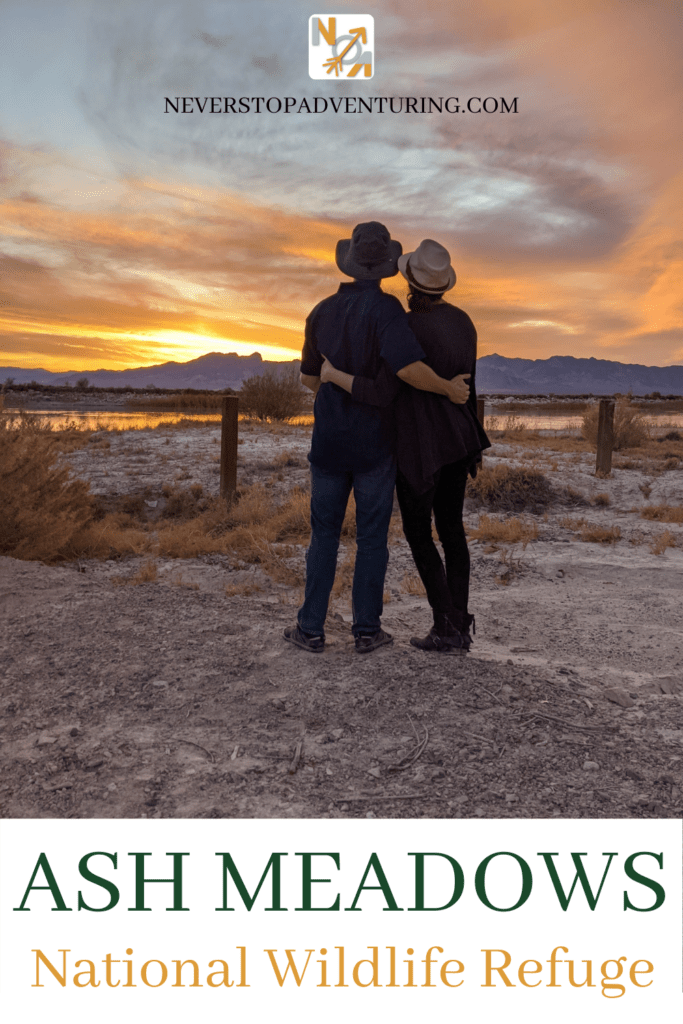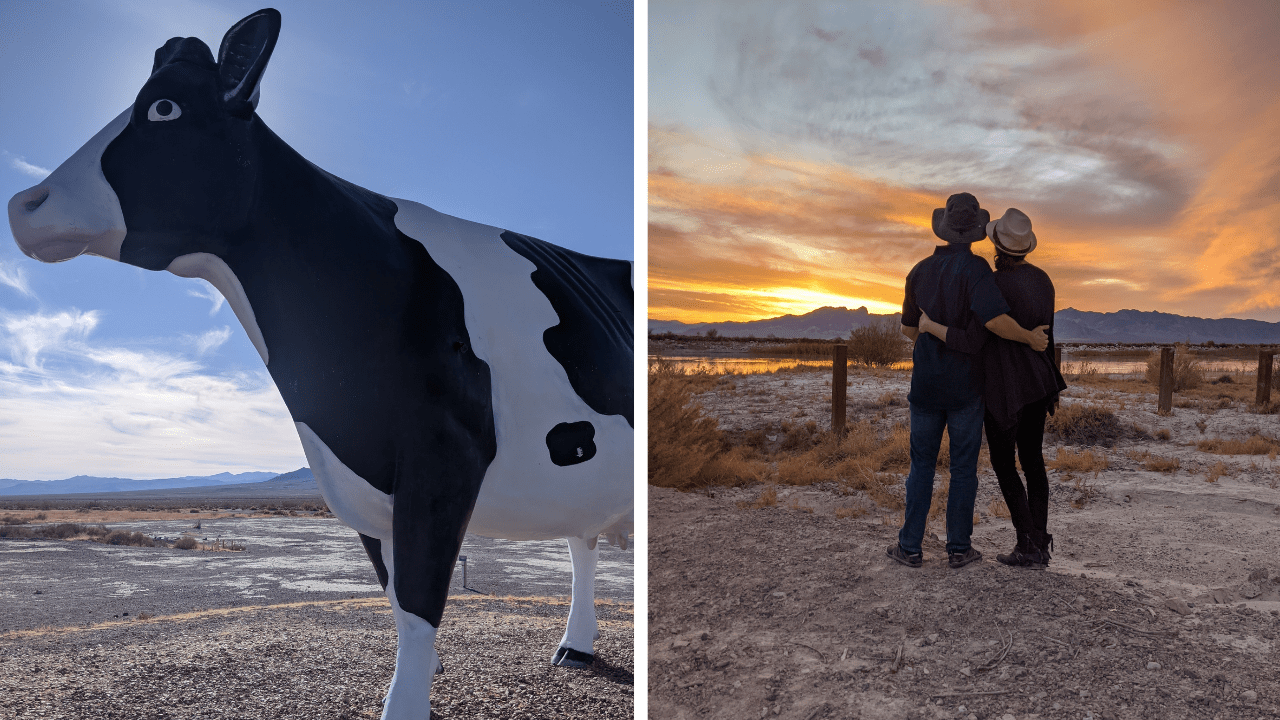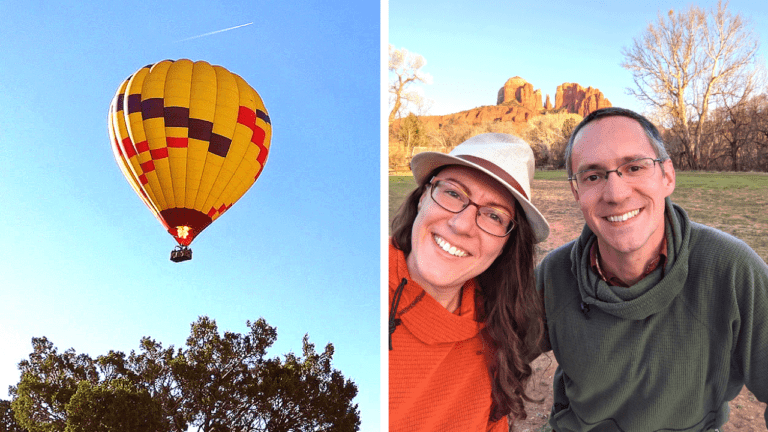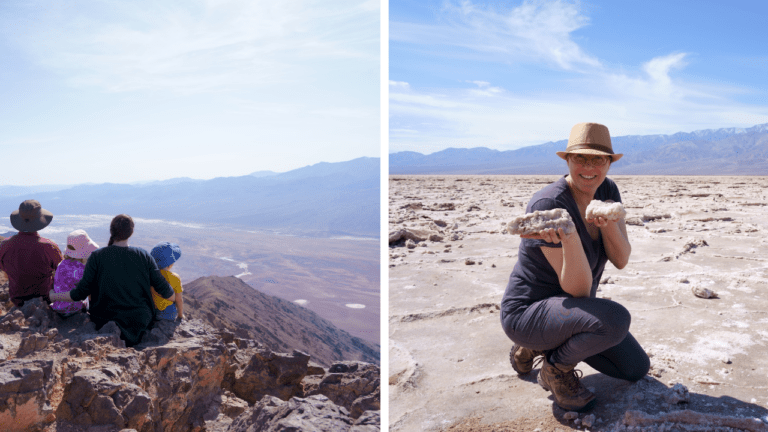Ash Meadows National Wildlife Refuge Visit
We headed south out of Oregon to warmer and drier weather in southern Nevada. Talk about a change in climate and scenery! The Mojave greeted us with vast expanses of some of the driest desert we’ve ever seen. On top of that, we enjoyed spectacular sunsets just about every evening.
Ash Meadows National Wildlife Refuge is the largest remaining oasis in the Mojave. It is quite the sight to see a spring-fed wetland in the middle of such a dry and often desolate region. Because of how isolated it is, it is home to 26 species of plants and animals that do not exist any where else on earth! Click below to see our adventures at Ash Meadows National Wildlife Refuge and a goofy, nearby attraction:
Big Bovine of the Desert
Why is there a giant fiberglass cow in the middle of the desert? Because, why not? Apparently, it began its life on top of the Holy Cow Casino and Brewery in Las Vegas. They went out of business and when the building was demolished in 2002, the owner of Longstreet Inn Casino & RV Park purchased it and hauled it out to it’s new home. It makes for quite the unexpected sight and continues to lure in customers. It certainly made for a humorous stop on our way to Ash Meadows.
More on Ash Meadows National Wildlife Refuge
It’s free! There is enough to see that you could easily spend the whole day there and we wish we had. Pack a meal because there are plenty of places to picnic. Also make sure to bring plenty of water. After all, it is a desert. If you plan far enough ahead (we did not), they also have tours available.
Where to Stay
We drove in from Pahrump, NV where we spent our holidays. Since the refuge is fairly remote, Pahrump is actually the largest town around and is about 30 minutes away. The RV Park right next to the great big cow is actually the closest thing around. We didn’t look closely at the RV spots while we were there, but they do offer full hook-ups. Outside of that, there is a fair amount of BLM land in the area where you could camp for free, but we weren’t aware of any spots in particular.
Any questions? Please let us know in the comments so that we can answer them!
If you liked this post, would you share it with friends? Thank you!
If you’d like to read about our RV and other RV adventures, then check out some of our other posts :
- Eugene Oregon | Covered Bridges and Beach Trip
- Bonneville Salt Flats & Lemoille Canyon
- Buckhorn Wash | Pictographs and Canyons
- The Wedge + Little Grand Canyon
- Kootenai Swinging Bridge & Falls | Montana National Forest Boondocking
- Southern Idaho | City of Rocks and Castle Rocks | Almo
Pin For Later:





Hey guys,
It’s my first time on here and I enjoy reading and seeing what you guys are up to. I haven’t done any extensive travel with my motorhome yet but feel so attracted to it when I see and read your posts. I’m in Dallas, TX.
But I have a question: you have put the flexible and lightweight panels on your roof. The idea of much less weight also led me to buying similar panels of Chinese origin. But I have found them to be of rather low efficiency.
I’d like to ask you what your experience really is with them, and where you got them and at what price. I paid $330 for the nominal 300W panels I have, but as said, I’m not really very happy with them. I have a Titan solar generator in my RV and would like to attain complete electrical independence with some decent panels on the roof.
Thanks for letting me know if you find the time. Also texting would work at xxx-xxx-xxxx if that might be easier for you.
Thanks a lot,
Jay
Hi Jay,
I hope you don’t mind, I removed your phone number just so it isn’t out there for the world to see.
We’re happy to hear that! One of our goals with sharing our travels is to inspire others to get out there themselves!
If you haven’t already, check out our post about our solar setup here: https://neverstopadventuring.com/2020/09/rv-solar-install-solar-panels/
We detail our costs in that post. Our experience with it has been really good so far. It’s a complex topic that really deserves it’s own post. We are planning on filming a 6 month update about how the system has been working out. Hopefully we’ll have that up on YouTube sometime next month.
Attaining electrical independence is really dependent upon how much stuff you want to be able to operate while off grid. There are lots of people out there that boondock with just a couple of panels and are perfectly happy with just being able to charge a laptop, cell phones, and run some lights at night. If you want to be able to run an AC unit for several hours a day it’s a totally different story!